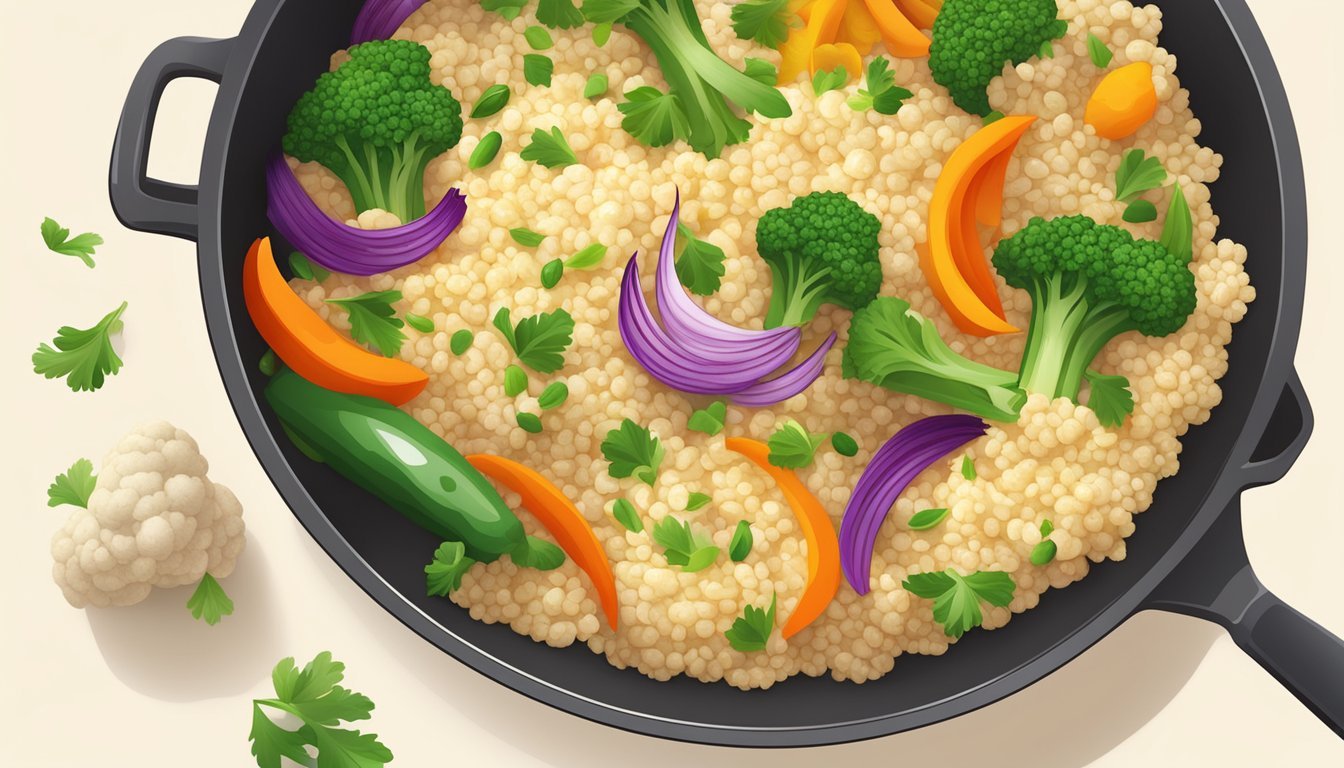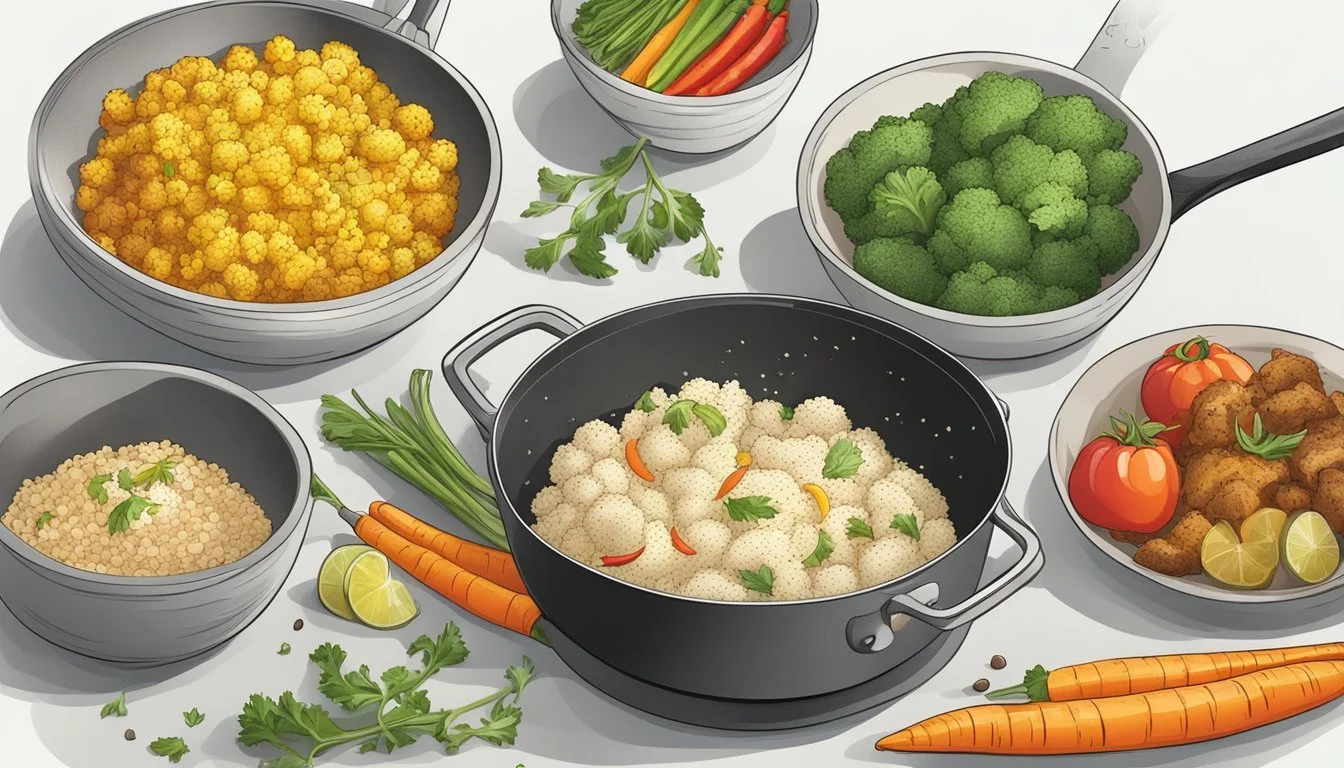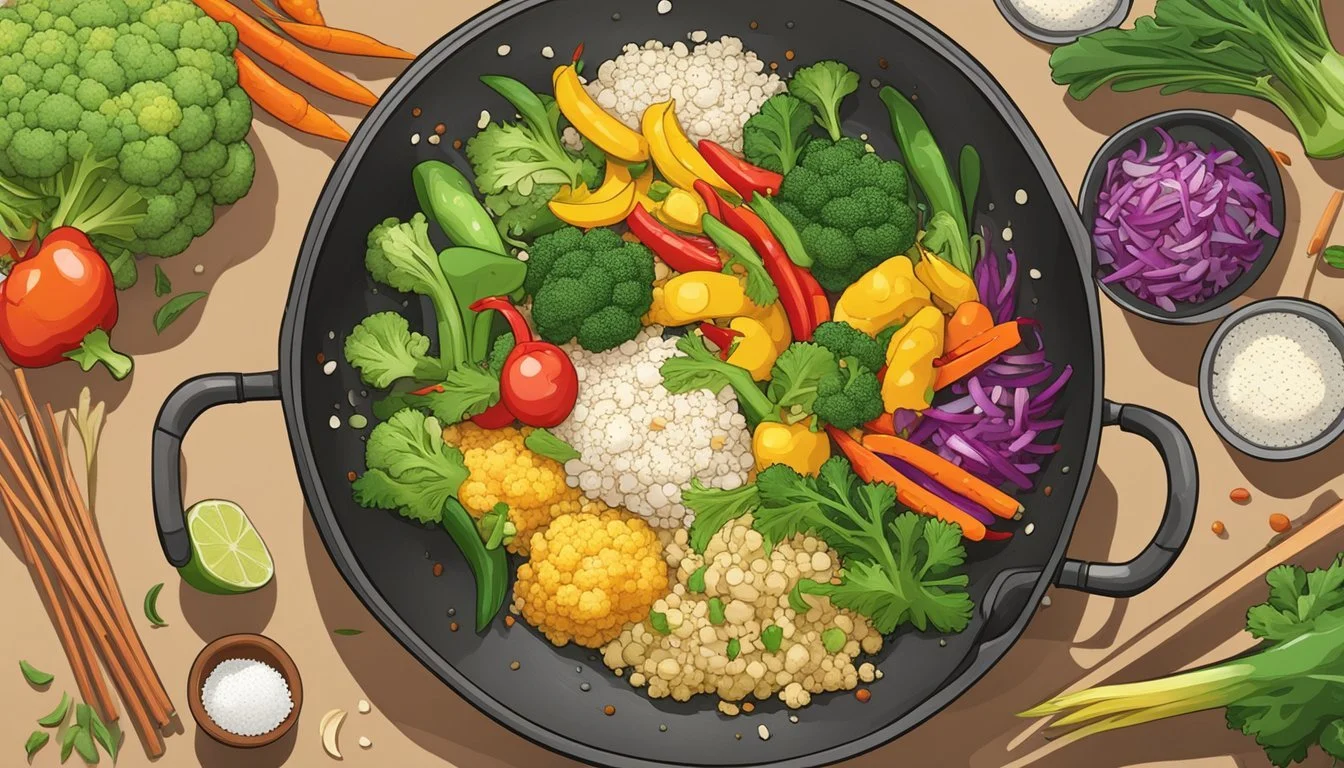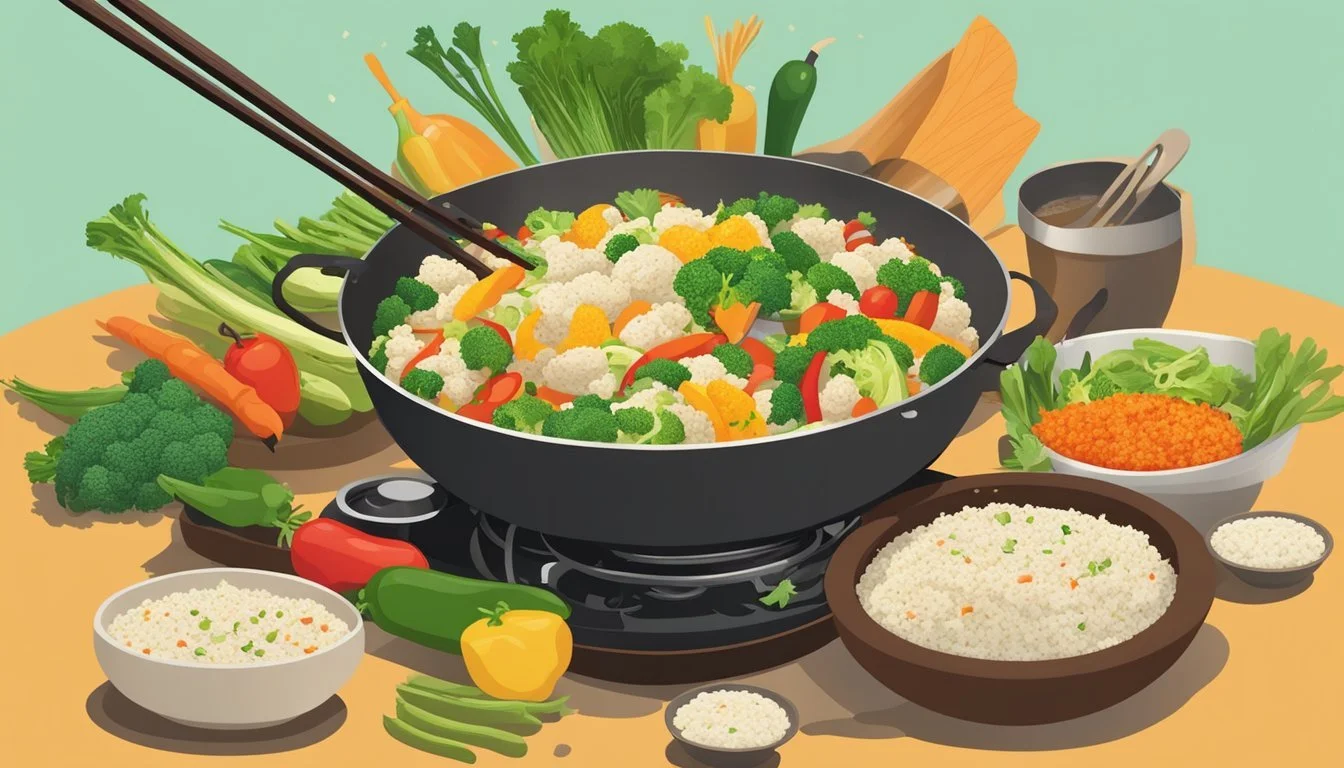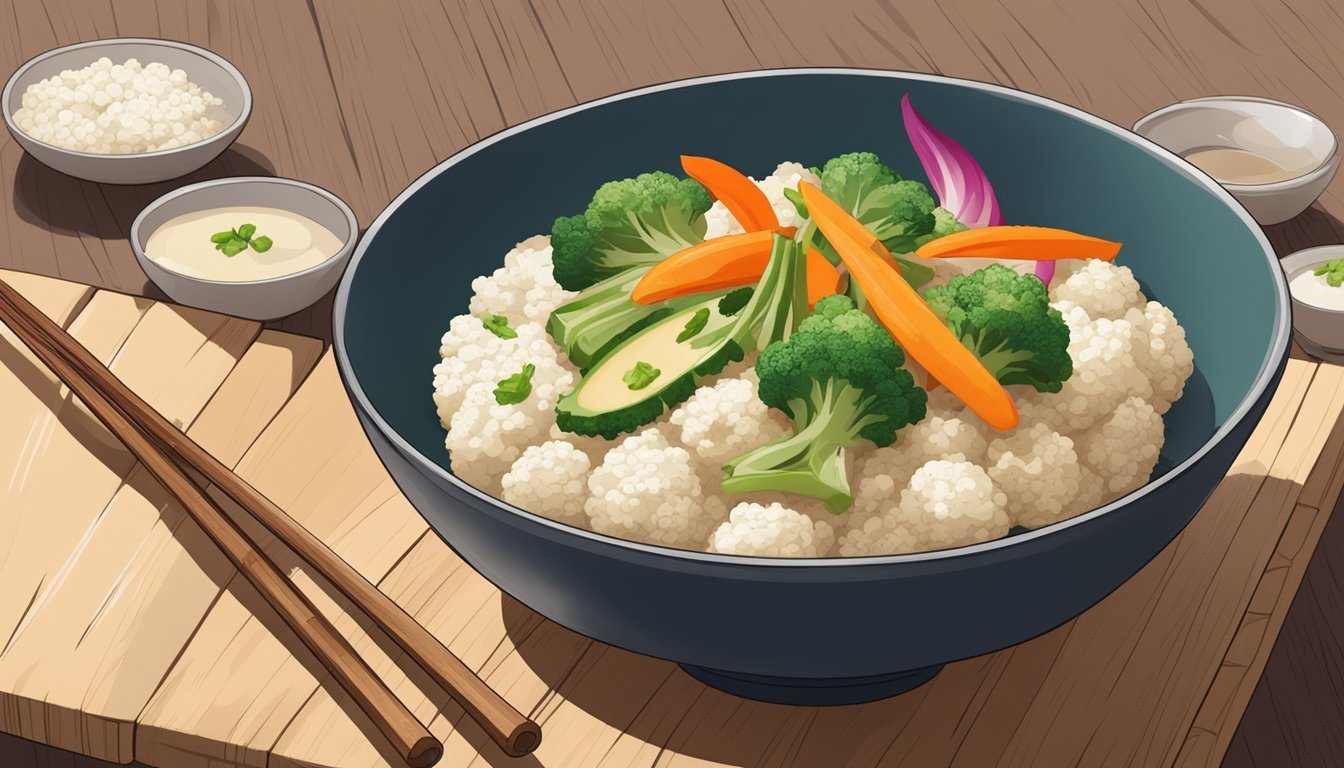How Long Does Cauliflower Rice Stir-Fry Last?
Storage Tips and Shelf Life
Cauliflower rice stir-fry is a versatile dish that's perfect for meal prep, but how long does it actually last? Properly stored in an airtight container in the refrigerator, cauliflower rice stir-fry can last for about 3-5 days. This makes it an excellent option for those who want to prepare meals in advance and enjoy them throughout the week without compromising freshness.
For optimal storage, the stir-fry should be cooled completely before transferring to the fridge. If you notice any off smells, changes in texture, or mold, it’s best to discard the dish to avoid any potential health risks. Knowing this, making a big batch of cauliflower rice stir-fry can save both time and effort, ensuring you have a nutritious meal ready to go whenever you need it.
Understanding Cauliflower Rice
Cauliflower rice is a popular grain-free alternative to traditional rice. It is made from fresh cauliflower that has been finely chopped or processed into small, rice-like pieces. This versatile ingredient can be easily found in most grocery stores, either fresh or frozen.
The nutritional benefits of cauliflower rice are notable. It is low in carbs and high in fiber, making it a healthy choice for those looking to reduce their carb intake. Additionally, it is packed with various vitamins and minerals, contributing to a balanced diet.
Preparing cauliflower rice at home is straightforward. A food processor is commonly used to achieve the desired texture, but a grater can also be effective. Once processed, it can be used in a variety of dishes, from stir-fries to salads.
When making cauliflower rice stir-fry, typical vegetables used include garlic, onion, and mixed vegetables. These add flavor and nutritional value to the dish. Sautéing the vegetables until fragrant before adding the cauliflower rice enhances the overall taste and texture.
Storing cauliflower rice correctly ensures its longevity. Fresh cauliflower rice should be kept in an airtight container in the fridge and used within a few days. Cooked cauliflower rice, especially in dishes like stir-fry, can last up to five days when stored in the refrigerator.
Cauliflower Rice Stir-Fry Basics
Cauliflower rice stir-fry is a quick, nutritious option often packed with various veggies, proteins, and flavorful sauces. Mastering this dish involves selecting the right ingredients, knowing the appropriate prep and cook times, and using essential cooking tools.
Selecting Ingredients
Selecting fresh and quality ingredients is key. Start with a head of cauliflower or pre-packaged cauliflower rice. Fresh vegetables like bell peppers, carrots, peas, and green onions add color and nutrients.
For protein, consider tofu, chicken, shrimp, or tempeh. A good stir-fry sauce can be made using coconut aminos or soy sauce, adding garlic, ginger, and a touch of vinegar for balance. Olive oil or avocado oil can be used for sautéing.
Prep Time and Cook Time
The prep time is relatively short, typically around 10-15 minutes. This includes chopping vegetables and proteins and making the stir-fry sauce. Preparing cauliflower rice from scratch might extend this by a few minutes.
For cooking, 5-10 minutes on medium heat should suffice. Stir-fry the garlic and onions first until fragrant. Then, add the prepped cauliflower rice and other vegetables. Cook until tender-crisp, mixing in the proteins and sauce toward the end. The total time from start to finish is approximately 20-25 minutes.
Essential Cooking Tools
A large skillet or wok is crucial for even cooking. Ensure it is heated properly to achieve the desired textures. A sharp knife and cutting board are essential for prepping ingredients efficiently.
Using a wooden spoon or heat-resistant spatula helps in constant stirring. To make the sauce, a small bowl and whisk or fork ensure even mixing. These tools collectively facilitate a seamless cooking experience, yielding a flavorful and well-cooked cauliflower rice stir-fry.
Health Benefits and Nutritional Profile
Cauliflower rice stir-fry is not only a versatile dish but also packed with numerous health benefits.
Calories
Cauliflower rice is low in calories, making it an excellent option for those aiming to reduce calorie intake while still enjoying a fulfilling meal.
Fiber
Cauliflower is high in dietary fiber, which aids in digestion and promotes a feeling of fullness. This can be beneficial for weight management and overall gut health.
Carbs and Protein
Cauliflower rice has fewer carbs compared to traditional rice. This makes it a great alternative for those following low-carb diets. It also contains a modest amount of protein, contributing to muscle repair and growth.
Vitamins and Minerals
Cauliflower is rich in essential vitamins such as Vitamin C, which supports the immune system, and Vitamin K, which is important for blood clotting and bone health. It also contains a good amount of folate and potassium.
Nutritional Info (per cup of cauliflower rice)
Calories: ~25
Fiber: 2 grams
Carbs: 5 grams
Protein: 2 grams
Vitamin C: 77% of the daily recommended intake
Vitamin K: 20% of the daily recommended intake
Folate: 15% of the daily recommended intake
Potassium: 5% of the daily recommended intake
With its low-calorie count and nutrient-rich profile, cauliflower rice stir-fry makes for a nutritious meal. It pairs well with various vegetables and proteins, further enhancing its health benefits.
Advanced Stir-Fry Techniques
Effective stir-frying requires mastering the use of a wok, controlling medium-high heat, and balancing flavors with sauces. The following techniques will help elevate your cauliflower rice stir-fry to the next level.
Stir-Frying with a Wok
A wok is essential for achieving the characteristic high-heat cooking of stir-frying. Its shape ensures even heat distribution and allows for easy tossing of ingredients.
To use a wok effectively, preheat it until it begins to smoke slightly. This ensures quick cooking and prevents sticking. Vegetables like broccoli florets and mushrooms benefit from this quick, high-heat method, retaining their crispness and vibrant color.
Oil choice is crucial. Opt for oils with high smoke points like coconut oil or sesame oil. These oils impart distinct flavors that enhance the dish.
Mastering Medium-High Heat
Cooking at the right temperature is key in stir-frying. Medium-high heat ensures that vegetables cook quickly, maintaining their texture and nutrients.
Timing is crucial. Add ingredients in stages. Start with aromatics like garlic and ginger. Follow with vegetables, adding those with longer cooking times, such as broccoli florets or zucchini, first.
Continuous stirring and tossing are important to prevent burning and ensure even cooking. Keep ingredients moving by using a flipping motion with the wok or a spatula.
Flavor Balancing with Sauces
Sauces tie together all the flavors in a stir-fry. The right balance of sweet, salty, sour, and umami can elevate the dish.
A basic stir-fry sauce can include a mixture of soy sauce or tamari for saltiness, maple syrup for sweetness, and lime juice or lemon juice for acidity.
For a more complex flavor, consider using peanut butter or almond butter for a creamy texture, paired with hot sauce for a spicy kick.
Proportions matter. Start with small amounts and adjust to taste. Remember, the aim is to enhance, not overpower, the natural flavors of the vegetables and cauliflower rice. Mix the sauce ingredients well before adding them to the wok to ensure even distribution.
Storing and Preserving Cauliflower Rice Stir-Fry
Proper storage of cauliflower rice stir-fry is essential to maintain freshness and ensure food safety.
Refrigeration
Place the cauliflower rice stir-fry in an airtight container before storing it in the refrigerator. Be sure to remove any excess moisture by patting it dry with a paper towel. This will help the dish stay fresh for up to four days.
Freezing
For longer storage, freezing the stir-fry is an option. Allow the stir-fry to cool completely before transferring it to a freezer-safe container or a resealable plastic bag. Press out any excess air before sealing. Label the container with the date, as the stir-fry can be stored in the freezer for up to three months.
Serving Leftovers
When ready to use leftovers, reheat only the portion you need. Avoid repeated freezing and thawing as this can affect the texture and flavor. Reheating can be done in the microwave for a few minutes or in a pan over medium heat.
Food Safety
Always ensure proper food safety practices: refrigerate leftovers promptly, avoid letting cooked food sit out at room temperature, and always reheat leftovers thoroughly to prevent foodborne illnesses.
Quick Tips:
Serving Size: Keep track of portions to avoid waste.
Storage Tools: Use airtight containers and resealable plastic bags.
Labeling: Always label with the date to keep track of freshness.
Customizing Your Stir-Fry
There are many ways to tailor cauliflower rice stir-fry to meet dietary needs, incorporate favorite proteins and vegetables, and experiment with creative flavors.
Variations for Dietary Needs
Customizing your stir-fry can easily accommodate various dietary restrictions. For vegan diets, replace animal proteins with tofu or tempeh, and ensure all sauces and seasonings are plant-based. For those seeking a gluten-free option, opt for tamari instead of soy sauce.
Keto enthusiasts can focus on low-carb vegetables like brussels sprouts and snow peas. The key is to choose ingredients that align with dietary preferences, making the dish not only enjoyable but also nutritious for everyone at the table.
Adding Proteins and Vegetables
Adding different proteins and vegetables enhances the nutritional value and flavor. Chicken breasts are a lean protein choice that cooks quickly. For a different taste, try beef strips or shrimp. Incorporating a variety of vegetables like green onions, bell peppers, and brussels sprouts adds color and texture.
Snow peas and shredded carrots provide a nice crunch. You can also blend in noodles or extra cauliflower rice to bulk up the meal. This flexibility ensures the stir-fry remains hearty and satisfying for both adults and children.
Creative Flavor Twists
Incorporate Asian flavors and unique seasonings to make your stir-fry stand out. Adding fresh ginger, garlic, and a splash of curry paste can transform the taste profile. Fresh herbs like cilantro can add a bright, fresh finish.
For an extra kick, try a bit of chili paste or Sriracha. Balancing sweet and savory elements using honey or a sugar substitute can mimic the taste of take-out dishes. These creative twists make each stir-fry meal distinct and exciting, perfect for those who love experimenting with their home-cooked meals.
Serving and Plating Suggestions
Consider pairing your cauliflower rice stir-fry with complementary side dishes and garnishing it for visual appeal to create an enticing meal.
Pairing with Side Dishes
Cauliflower rice stir-fry pairs wonderfully with a variety of side dishes. Whole grain wraps offer a delicious, portable option. Simply spoon the stir-fry into the wrap, add a bit of avocado, and roll it up.
For a more traditional plate, consider serving with a simple green salad. Use a mix of lettuce, baby spinach, and cherry tomatoes dressed lightly with olive oil and lemon juice.
Another great option is to serve alongside a bowl of miso soup. The savory flavors of the soup balance the freshness of the stir-fry. Portions should be mindful of the serving size; about 1 cup of cauliflower rice stir-fry per person.
Garnishing for Visual Appeal
Garnishing can elevate the presentation of your cauliflower rice stir-fry, making it Instagram-worthy. Cilantro and fresh parsley leaves sprinkled on top add a pop of green and a burst of freshness.
Green onion sliced thinly and sesame seeds sprinkled all over introduce an appealing contrast in color and texture. For a bit of crunch, consider adding chopped cashews or peanuts.
Slices of avocado arranged on the side or top of the stir-fry add a rich, creamy element. Add a wedge of lime or lemon to the plate for a bright finishing touch that your guests can squeeze for extra flavor.
Final Thoughts
Cauliflower rice stir-fry is a versatile and convenient dish, perfect for a weeknight meal.
When properly stored, it can last up to five days in the fridge. This makes it an ideal option for meal prepping, ensuring the family has a nutritious meal ready throughout the week.
If using frozen cauliflower rice, it may slightly extend the dish's shelf life.
To maintain the best texture and flavor, it's recommended to use vegetable broth when reheating. This adds moisture and enhances the overall taste experience.
Whether serving as a main course or side dish, cauliflower rice stir-fry remains a delicious and healthy alternative to traditional rice dishes.


